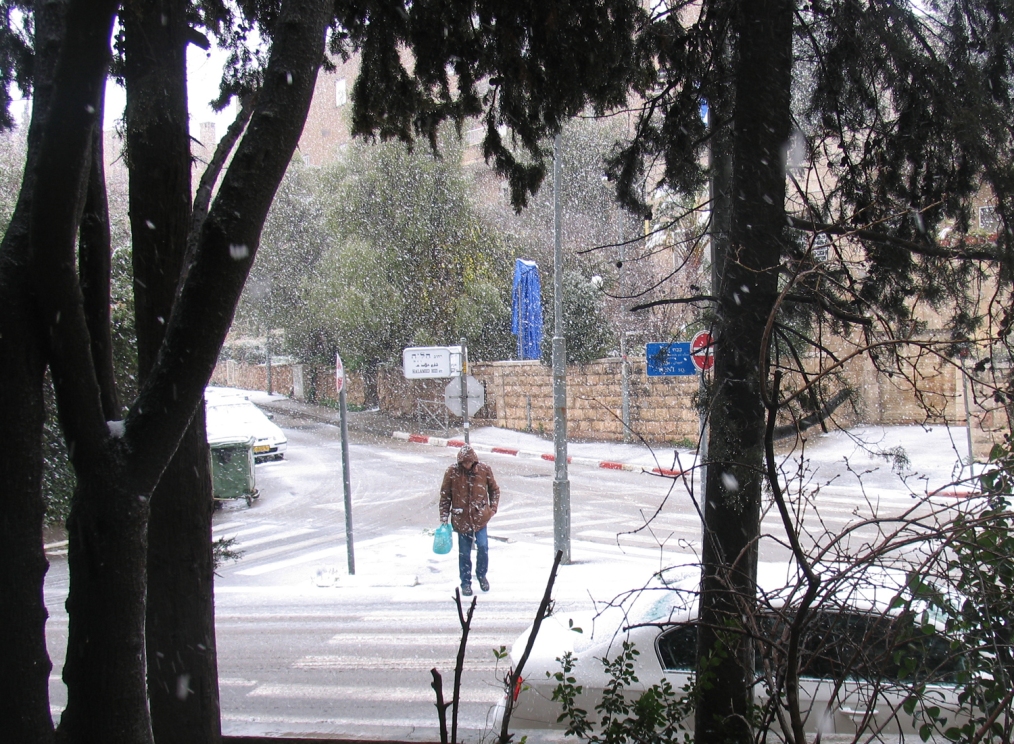
Shakshouka, the specialty of Dr. Shakshouka in Jaffa, consists of sunny-side-up eggs in a tangy tomato sauce.
There was a time when every Jewish mother wanted to be able to brag about “My son, the doctor.” Even now, according to a report in the daily Ha’aretz, the profession most desired for their children by Israeli parents is medicine. In a recent survey by Israel’s Science and Technology Ministry, which included 528 subjects, 24 percent chose medicine and only 2 percent chose teaching.
Israel has found a clever way to satisfy the 24 percent without their having to put their children through medical school. Every specialist, especially outside the field of medicine, is a doctor. Many are associated with the culinary arts. Thus, we have in Jaffa (Tel Aviv’s southern half) the restaurant called Dr. Shakshouka, which specializes in Tripolitanian cuisine, and Dr. Lek (“lick”), an ice cream chain. There’s also a Dr. Hatzil (“eggplant”) not far away.
Elsewhere, there’s Dr. Baby, which sells “sophisticated” equipment for infants, and Dr. Gav (“back”), one of whose designs I’m using to support my vertebrae at this very moment. There’s also Dr. Or (“skin”), which, as you guessed, sells cosmetics, and Dr. Polish, which sells cleaning agents. There’s even a Dr. iPhone.
Now I do not have a son who is a doctor, but since one of my sons started teaching in a university I’ve been able to brag about “My son, the professor.”
Jerusalem Marathon ends; hail the spring-cleaning marathon
The 15,000 runners who took part in the second annual Jerusalem Marathon last week had to endure cold, rain, and even hail—in addition to the hilly terrain. But their ordeal is as nothing compared to the annual spring marathon in which almost the entire country participates.
Purim is the last hurrah for freedom. No sooner does that holiday end than the slavery of cleaning for Passover—the holiday marking our liberation from slavery—begins. In Israel, Passover cleaning goes far beyond the ritual removal of leavened bread (hametz, in Hebrew).
Every nook and cranny is vacuumed, scrubbed, and polished. Closets are emptied and cleaned, pockets turned out, shoes dusted. No speck is safe. And that’s not mentioning the people who go after their ovens with a blowtorch.
It’s the time of year when companies like Dr. Polish make a killing. So do newspapers, which carry pages and pages of ads for miracle cleaners (though none of them relieves the need for elbow grease).
A woman I know who has three little children and is expecting a fourth any minute asked me to recommend someone who could watch her children after the baby is born, while she and her husband clean for Passover.
My accountant, who has eight children, revealed her secret to me yesterday. Her children do the cleaning. But the trick, she informed me, is to train the young ones to do it, because the older ones marry and move out and have their own homes to clean.
Not having eight children, or even four, I restrict my efforts mainly to clearing the cobwebs out of my brain and the spam out of my laptop. That’s about as much hametz as I can handle.
Text and photo copyright 2012 by Esther Hecht. No part of the text or photo may be used without written permission of the author.






